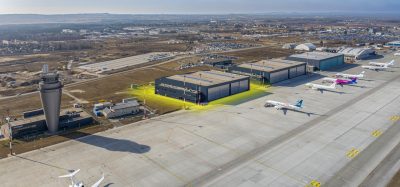Sharpening ATCO training
- Like
- Digg
- Del
- Tumblr
- VKontakte
- Buffer
- Love This
- Odnoklassniki
- Meneame
- Blogger
- Amazon
- Yahoo Mail
- Gmail
- AOL
- Newsvine
- HackerNews
- Evernote
- MySpace
- Mail.ru
- Viadeo
- Line
- Comments
- Yummly
- SMS
- Viber
- Telegram
- Subscribe
- Skype
- Facebook Messenger
- Kakao
- LiveJournal
- Yammer
- Edgar
- Fintel
- Mix
- Instapaper
- Copy Link
Posted: 29 May 2020 | Paul Diestelkamp - Air Navigation Solutions | No comments yet
Paul Diestelkamp, Head of Business Development and Solutions at Air Navigation Solutions, discusses the ATCO Resource Subscription Scheme and how, through developing new technologies, the approach to air traffic management is set to become more accessible for smaller airports.


The demand for licensed air traffic controllers (ATCOs) continues to remain very high. It is one of the biggest challenges faced by the air traffic management industry, especially where air traffic control (ATC) units don’t have access to ATCO training facilities – something that is particularly the case at regional airports.
A new generation of ATCOs
Air Navigation Solutions Ltd. (ANSL) is a leading UK air traffic management provider, headquartered in London Gatwick Airport’s old control tower, and is responsible for air traffic management services at some of the most complex air traffic operations in the world. These include Gatwick, the busiest single runway operation, and Edinburgh Airport, Scotland’s biggest airport.
ANSL also works with various regional and national airports around the UK, providing consultancy, training services and other tailored solutions. One of these services is its recently launched ATCO Resource Subscription Scheme.
Working with its parent company, DFS Deutsche Flugsicherung GmbH, ANSL runs a CAA-approved ATCO ab-initio training course in Langen, Germany, where trainees spend six months learning the fundamental skills required to become an ATCO. Following this, the trainees receive Aerodrome (ADI) and Surveillance Approach (APS) training, before returning to the UK. ANSL’s newly launched subscription scheme means that these licensed ATCOs can then be provided to UK aerodromes on a rotational basis.
ATCO resource subscription scheme
Through the scheme, ANSL is able to provide fully trained ATCOs to a unit for as long a pre-agreed period as meets their operational needs. Each ATCO is likely to be deployed to a unit for approximately two years, after which they will return to ANSL and be deployed to the next unit.
This approach enables ATC units to keep their resourcing stable and costs controlled, whilst benefiting from a steady stream of ATCOs with a high standard of training. It allows the ATCOs to continuously build their expertise and experience through working at multiple locations, whilst enabling ANSL to develop a pool of skilled ATCOs that they can then deploy to the complex ATC units they operate at Gatwick and Edinburgh.
In 2019, ANSL helped Carlisle Lake District Airport reopen to commercial traffi c through a mix of ATCO resourcing and the use of its 3D simulator, which is based in Edinburgh.
The simulator was a key part of ANSL’s innovative approach to ATCO training for Carlisle Lake District Airport. It was a core element of the work with the airport, in conjunction with a CAA-approved greenfield validation plan, that enabled it to reopen and commence commercial flights for the first time in over 25 years. ANSL currently have three ATCOs deployed to Carlisle, marking the first deployment of its resource subscription scheme.
Implementing ATM solutions
ANSL works in close partnership with all of its airport customers. One example of this is its work with Gatwick Airport to support the development of its ATM Masterplan, in line with the recently consulted on Airfield Masterplan.
ANSL is also continually developing and delivering innovations to make ATM safer and more efficient. A key part of this involves integrating and deploying new technology and developing concepts and solutions that transform how ATM is delivered.
A recent example of such technology deployment is ANSL’s partnership with SITTI, a supplier of voice communications systems (VCS) worldwide, to enhance the air traffic management infrastructure at Edinburgh and Gatwick airports through the deployment of a voice communication and control system.
The VCS replacement is a testament to ANSL’s commitment to innovation, and introducing next generation technologies at all of its ATC operations, enabling more integrated and efficient air traffic management processes.
New approaches to air traffic systems
ANSL’s partnership approach with SITTI has enabled it to introduce a new competitor solution in the UK, and to off er it to the wider UK market. ANSL has also ensured that the solution will be a key part of its concept of air traffic system subscriptions, which it will shortly introduce to the market, making state-of-the-art technology more widely available to smaller airports and ATC units.
As a new decade begins, ANSL is ready for the opportunities available in the air traffic management marketplace, with a future-focused approach to its people and the technology that supports them.
By working in partnership, ANSL is developing better ways of working. In breaking this new ground, it is unlocking the potential for growth, and re-imagining the expectations of its people, customers and the way in which things can be done.




















